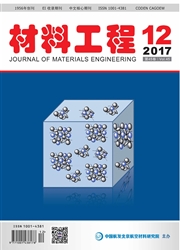

 中文摘要:
中文摘要:
利用电子背散射衍射(EBSD)技术和场发射电子扫描显微镜(FESEM)研究了电工钢中柱状晶不同初始取向50%热压缩变形后的演变规律及其对粒子析出行为的影响。结果表明:〈100〉晶粒形变后仍为〈100〉取向,只发生绕ND∥〈100〉方向的转动,具有遗传性,粒子析出数量少。柱状晶长轴与压缩轴的偏转度增加,取向的稳定性变差,超过40°,可形成〈111〉取向,期间发生复杂的滑移系交互作用,产生较高的缺陷密度,促进粒子析出。MnS粒子主要在晶内析出,变形温度高、形变量低,粒子均无法充分析出。回复时,形变晶粒内高的储能和缺陷密度是促进粒子进一步析出的必要条件。
 英文摘要:
英文摘要:
The evolution of initial orientations and their influence on precipitation of columnar-grained electrical steel after 50% hot compression deformation were investigated by electron backscatter diffraction technique and field emission scanning electron microscopy. The results indicate that the (100) orientated columnar grains remain still (100) after hot compression deformation, with only rotation around ND parallel to (100) direction, with heredity, and less precipitation. As the deviation angle between the long axis of columnar grain and the compression axis increases, the stability of initial grain orientation becomes poor, when the deviation angle is higher than 40°, the (111) oriented grains can be formed, during which higher defect density is formed due to the complex interaction of slip systems which facilitate the MnS precipitation. The MnS particles nucleate dominantly within hot compressed grains, particles can not be precipitated thoroughly either at high temperature or low reduction rate during hot compression, and in a subsequent recovery, the high deformation energy storage and defect density are prerequisite to promote further precipitation.
 同期刊论文项目
同期刊论文项目
 同项目期刊论文
同项目期刊论文
 Early-stage nucleation of manganese sulfide particle and its processing evolution in Fe--3wt.%Si all
Early-stage nucleation of manganese sulfide particle and its processing evolution in Fe--3wt.%Si all Formation of cube texture affected by neighboring grains in a transverse-directionally aligned colum
Formation of cube texture affected by neighboring grains in a transverse-directionally aligned colum 期刊信息
期刊信息
